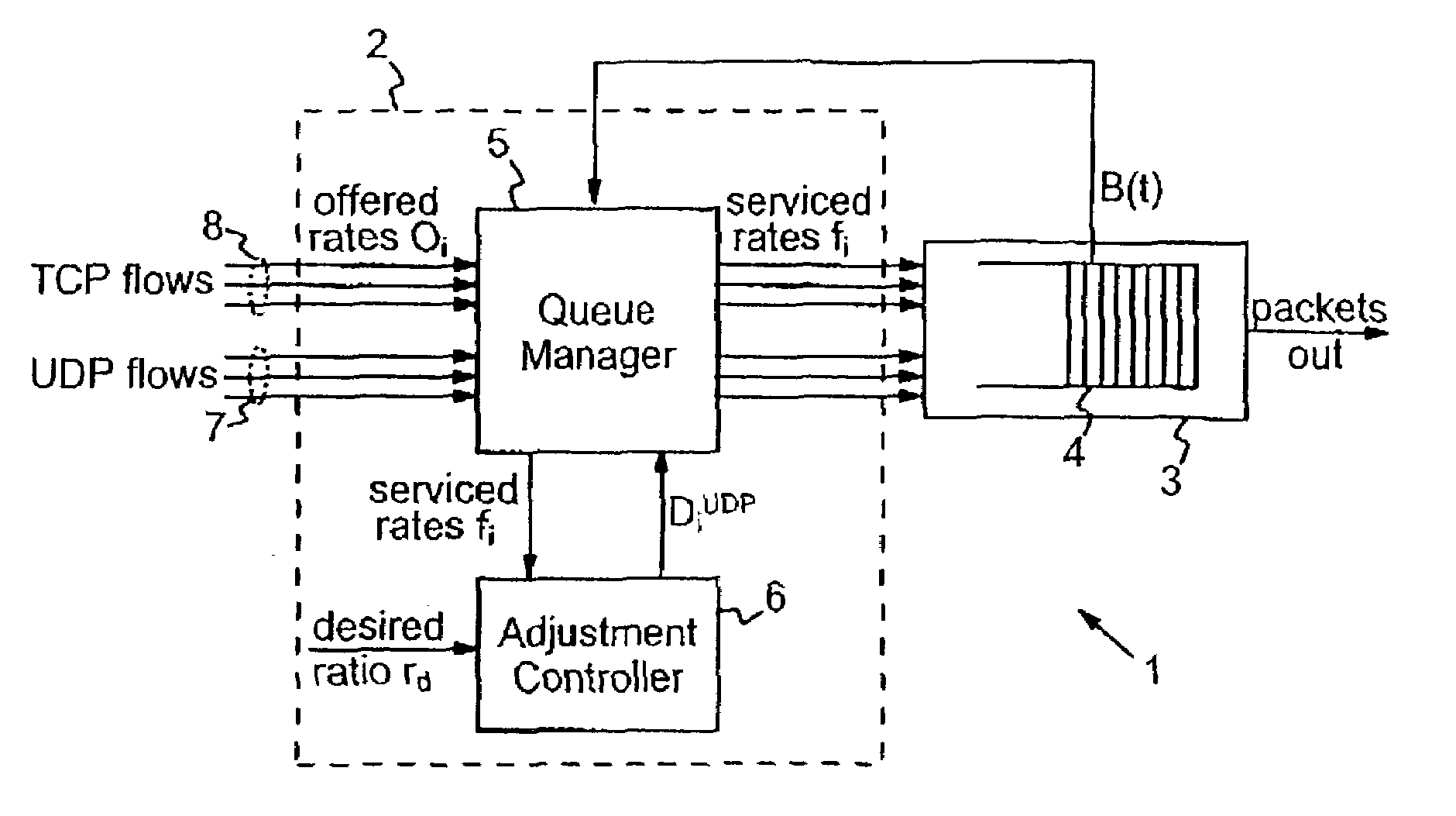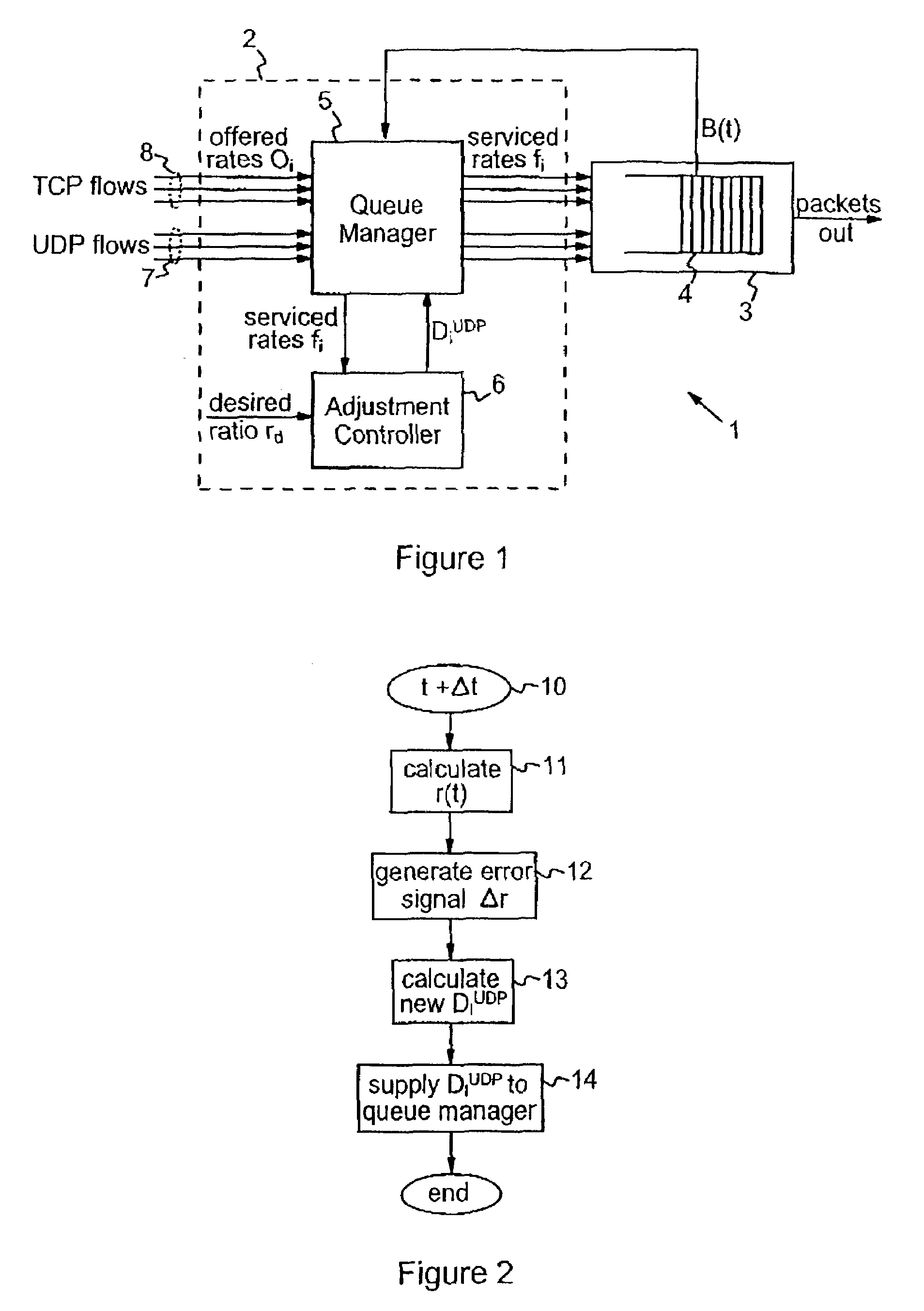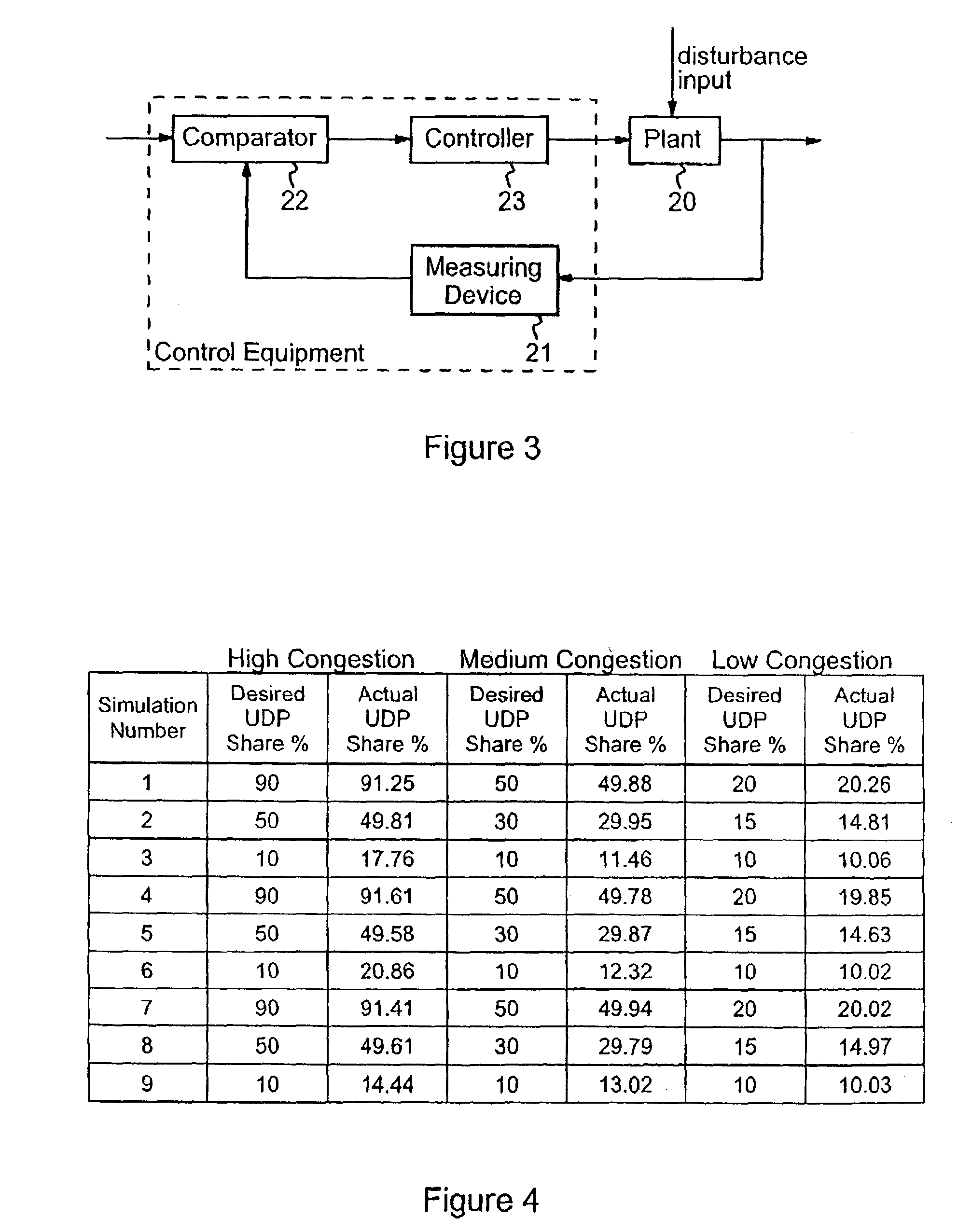Flow control in network devices
a network device and flow control technology, applied in data switching networks, high-level techniques, frequency-division multiplexes, etc., can solve the problems of non-responsive flows that can “choke out” responsive flows, taking all the excess bandwidth, etc., and achieve the effect of reducing the deviation
- Summary
- Abstract
- Description
- Claims
- Application Information
AI Technical Summary
Benefits of technology
Problems solved by technology
Method used
Image
Examples
Embodiment Construction
[0033]Flow control systems embodying the invention may be employed in a variety of network devices such as switches, routers, bridges, traffic shapers, load balancing devices, middleboxes, and devices incorporating firewalls for example. In general the flow control systems to be described may be employed in any device in which management of queues is required. In a typical network device such as a router, incoming data packets received by the device undergo various processing stages, for example buffering in the medium access control components, packet classification and transmission across the internal switching fabric, before being forwarded on across the network. Packets may be queued at various stages of this process pending processing by a particular device resource. Flow control systems embodying the invention can be employed at any one of these stages to protect the resource from overload under conditions of congestion. A particular example of such a flow control system will ...
PUM
 Login to View More
Login to View More Abstract
Description
Claims
Application Information
 Login to View More
Login to View More - R&D
- Intellectual Property
- Life Sciences
- Materials
- Tech Scout
- Unparalleled Data Quality
- Higher Quality Content
- 60% Fewer Hallucinations
Browse by: Latest US Patents, China's latest patents, Technical Efficacy Thesaurus, Application Domain, Technology Topic, Popular Technical Reports.
© 2025 PatSnap. All rights reserved.Legal|Privacy policy|Modern Slavery Act Transparency Statement|Sitemap|About US| Contact US: help@patsnap.com



